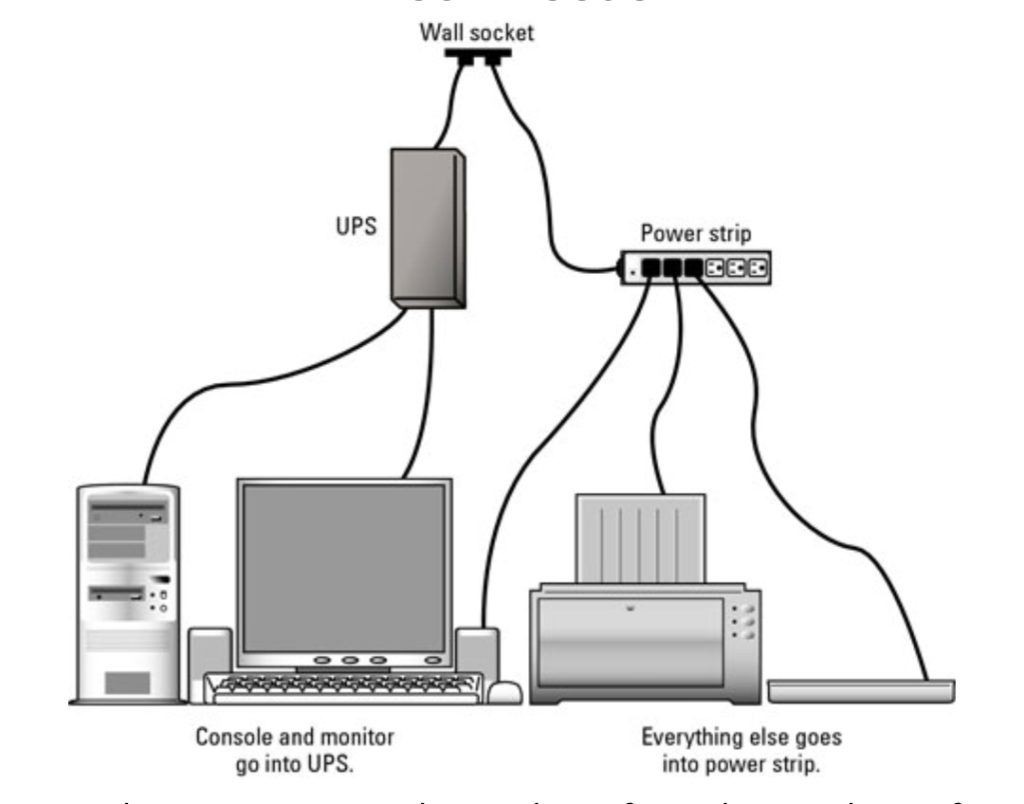How to Choose the Best Uninterruptible Power Supply for Your Needs

With so many people working from home, lots of attention has been dedicated to making sure everyone has a functional computer, a reasonably ergonomic workspace, and a decent videoconferencing setup. One thing that many have overlooked, however, is the need for a reliable uninterruptible power supply (UPS). Particularly for those using desktop Macs or external hard drives, a UPS is essential because it protects your work—and your devices—against surges, brownouts, and outright power failures. That’s especially helpful as we head into the summer thunderstorm and fall hurricane season.
What is a UPS?
Put simply, a UPS is a big battery into which you plug your Mac and other peripherals. It then plugs into a wall outlet and monitors the incoming power. If the normal power fails, or surges or falls below a certain threshold, the UPS notices and switches the power source to its internal battery. This happens so quickly that your Mac never even notices.
How to Choose
Choosing the best Uninterruptible Power Supply (UPS) for your needs involves considering several key factors:
1. Load Requirements: Calculate the total power load (in watts) of the equipment you need to protect. The UPS you choose should have a capacity (VA/Watt rating) that comfortably exceeds this load.
2. Battery Runtime: Determine how long you need the UPS to provide power during an outage. This depends on whether you need just enough time for a safe shutdown or longer backup for continued operation.
3. Topology: UPS systems come in various topologies, such as Standby, Line-Interactive, and Online (Double-Conversion). Online UPS offers the highest protection but can be costlier.
4. Number of Outlets: Ensure the UPS has enough outlets to accommodate all the devices you want to protect.
5. Voltage and Frequency Compatibility: Make sure the UPS is compatible with the voltage and frequency of your region’s power supply.
6. Type of Waveform: Some equipment, especially sensitive electronics, may require a pure sine wave output for optimal performance. Check if the UPS provides this.
7. Software and Connectivity: Look for a UPS that offers software for remote monitoring and shutdown, as well as connectivity options like USB, Ethernet, or serial ports.
8. Budget: Consider your budget constraints and find a UPS that balances your needs with affordability.
9. Brand and Reputation: Choose reputable UPS brands known for reliability and customer support.
10. Warranty and Support: Check the warranty and available customer support for the UPS.
11. Environmental Factors: Consider factors like available space, temperature, and noise when selecting a UPS.
12. Scalability: If your power needs may change in the future, consider a UPS that can be easily expanded or upgraded.
13. Certifications: Look for UPS systems that meet relevant industry standards and certifications.
14. User Reviews: Research user reviews and experiences to get real-world feedback on the UPS models you’re considering.
It’s essential to tailor your UPS choice to your specific requirements. If in doubt, consult with a professional or seek guidance from the UPS manufacturer to ensure that the UPS you select can adequately protect your equipment and meet your needs.






